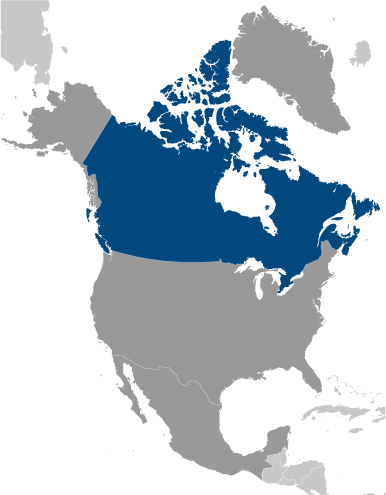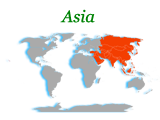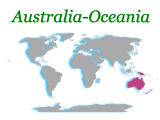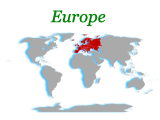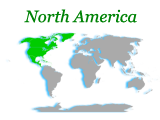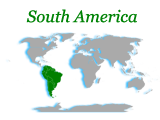A land of vast distances and rich natural resources, Canada became a self-governing dominion in 1867 while retaining ties to the British crown. Economically and technologically the nation has developed in parallel with the US, its neighbor to the south across an unfortified border. Canada faces the political challenges of meeting public demands for quality improvements in health care and education services, as well as responding to the particular concerns of predominantly francophone Quebec. Canada also aims to develop its diverse energy resources while maintaining its commitment to the environment.
Country Name
Conventional long form:none
Conventional short form:Canada
Government Type
a parliamentary democracy, a federation, and a constitutional monarchy
Capital
Name:Ottawa
Geographic coordinates:45 25 N, 75 42 W
Time difference:UTC-5 (same time as Washington, DC during Standard Time)
daylight saving time: +1hr, begins second Sunday in March; ends first Sunday in November
note: Canada is divided into six time zones
Administrative divisions
10 provinces and 3 territories*; Alberta, British Columbia, Manitoba, New Brunswick, Newfoundland and Labrador, Northwest Territories*, Nova Scotia, Nunavut*, Ontario, Prince Edward Island, Quebec, Saskatchewan, Yukon Territory*
Independence
1 July 1867 (union of British North American colonies); 11 December 1931 (recognized by UK)
National Holiday
Canada Day, 1 July (1867)
Constitution
made up of unwritten and written acts, customs, judicial decisions, and traditions; the written part of the constitution consists of the Constitution Act of 29 March 1867, which created a federation of four provinces, and the Constitution Act of 17 April 1982, which transferred formal control over the constitution from Britain to Canada, and added a Canadian Charter of Rights and Freedoms as well as procedures for constitutional amendments
Legal system
based on English common law, except in Quebec, where civil law system based on French law prevails; accepts compulsory ICJ jurisdiction with reservations
Suffrage
18 years of age; universal
Executive branch
head of state: Queen ELIZABETH II (since 6 February 1952); represented by Governor General Michaelle JEAN (since 27 September 2005)
Head of government:Prime Minister Stephen Joseph HARPER (since 6 February 2006)
Cabinet:Federal Ministry chosen by the prime minister usually from among the members of his own party sitting in Parliament
(For more information visit the World Leaders website)
Elections:the monarchy is hereditary; governor general appointed by the monarch on the advice of the prime minister for a five-year term; following legislative elections, the leader of the majority party or the leader of the majority coalition in the House of Commons generally designated prime minister by the governor general
Legislative branch
bicameral Parliament or Parlement consists of the Senate or Senat (105 seats; members appointed by the governor general on the advice of the prime minister and serve until 75 years of age) and the House of Commons or Chambre des Communes (308 seats; members elected by direct, popular vote to serve a maximum of five-year terms)
Elections: House of Commons - last held on 14 October 2008 (next to be held no later than 15 October 2012)
Election results:House of Commons - percent of vote by party - Conservative Party 37.6%, Liberal Party 26.2%, New Democratic Party 18.2%, Bloc Quebecois 10%, Greens 6.8%, other 1%; seats by party - Conservative Party 145, Liberal Party 77, New Democratic Party 37, Bloc Quebecois 48, other 1
Judicial branch
Supreme Court of Canada (judges are appointed by the prime minister through the governor general); Federal Court of Canada; Federal Court of Appeal; Provincial Courts (these are named variously Court of Appeal, Court of Queen's Bench, Superior Court, Supreme Court, and Court of Justice)
Political Parties and Leaders
Bloc Quebecois [Gilles DUCEPPE]; Conservative Party of Canada [Stephen HARPER] (a merger of the Canadian Alliance and the Progressive Conservative Party); Green Party [Elizabeth MAY]; Liberal Party [Michael IGNATIEFF]; New Democratic Party [Jack LAYTON]
Political pressure groups and leaders
Other:agricultural sector; automobile industry; business groups; chemical industry; commercial banks; communications sector; energy industry; environmentalists; public administration groups; steel industry; trade unions
International organization participation
ACCT, ADB (nonregional member), AfDB (nonregional member), APEC, Arctic Council, ARF, ASEAN (dialogue partner), Australia Group, BIS, C, CDB, CE (observer), EAPC, EBRD, ESA (associate), ESA (cooperating state), FAO, FATF, G-20, G-7, G-8, G-10, IADB, IAEA, IBRD, ICAO, ICC, ICCt, ICRM, IDA, IEA, IFAD, IFC, IFRCS, IHO, ILO, IMF, IMO, IMSO, Interpol, IOC, IOM, IPU, ISO, ITSO, ITU, ITUC, MIGA, MINUSTAH, MONUC, NAFTA, NATO, NEA, NSG, OAS, OECD, OIF, OPCW, OSCE, Paris Club, PCA, PIF (partner), SECI (observer), UN, UNCTAD, UNDOF, UNESCO, UNFICYP, UNHCR, UNMIS, UNRWA, UNTSO, UNWTO, UPU, WCO, WFTU, WHO, WIPO, WMO, WTO, ZC
Diplomatic representation in the US
Chief of mission:Ambassador Gary DOER
Chancery:501 Pennsylvania Avenue NW, Washington, DC 20001
Telephone:[1] (202) 682-1740
FAX:[1] (202) 682-7701
Consulate(s) general:Atlanta, Boston, Buffalo, Chicago, Dallas, Denver, Detroit, Los Angeles, Miami, Minneapolis, New York, Phoenix, San Diego, San Francisco, Seattle, Tucson
consulate(s): Anchorage, Houston, Philadelphia, Princeton (New Jersey), Raleigh, San Jose (California), Tucson
Diplomatic representation from the US
Chief of mission:Ambassador David C. JACOBSON
Embassy:490 Sussex Drive, Ottawa, Ontario K1N 1G8
Mailing address:P. O. Box 5000, Ogdensburg, NY 13669-0430; P.O. Box 866, Station B, Ottawa, Ontario K1P 5T1
Telephone:[1] (613) 688-5335
FAX: [1] (613) 688-3082
consulate(s) general: Calgary, Halifax, Montreal, Quebec, Toronto, Vancouver, Winnipeg
Flag description
two vertical bands of red (hoist and fly side, half width) with white square between them; an 11-pointed red maple leaf is centered in the white square; the maple leaf has long been a Canadian symbol; the official colors of Canada are red and white

